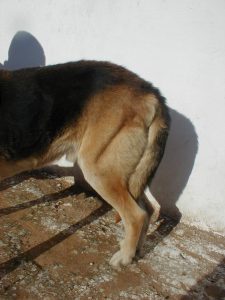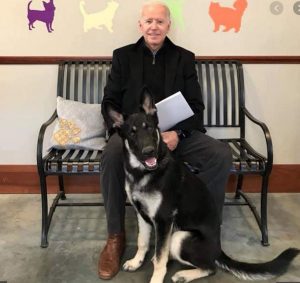 Science has made tremendous progress in the past decade especially in the area of DNA both for humans and for canines. Recently, the University of New South Wales, one of the top research facilities in the world, has made monumental advances in DNA sequencing in the animal world, and they are creating attention for healing German Shepherds with hip problems, which is a common problem for GSDs.
Science has made tremendous progress in the past decade especially in the area of DNA both for humans and for canines. Recently, the University of New South Wales, one of the top research facilities in the world, has made monumental advances in DNA sequencing in the animal world, and they are creating attention for healing German Shepherds with hip problems, which is a common problem for GSDs.
Last year, an international competition was held to find a dog with superior DNA that UNSW could sequence the DNA and focus on eliminating the hip dysplasia that occurs in both in younger and older German Shepherds. This disease is passed down through genetics, and UNSW scientists are planning to sequence the genome of Kira, a young German Shepherd, with the superior line of DNA.
A disease-free line of DNA was found in a seven-year-old dingo dog named Sandy by sequencing her DNA. Now, all this may sound extremely technical, and it is science at its best, but it is not too technical for the average pet owner. This incredible process is a milestone for preventing hip disease, among other diseases, in German Shepherd pets, and it can also be applied to Golden Retrievers, Labradors, St. Bernards and Rottweilers.
Here’s the cheat sheet on the terms:
- DNA – deoxyribonucleic acid, molecules that store the fundamental biological information of any and all living things.
- Sequencing – DNA sequencing determines the exact order of nucleotides, which are the group of molecules that form a DNA molecule. They determine the order of the base of a DNA strand. Molecules are not randomly aligned, and sequencing methods have immensely accelerated medical research.
- A genome is a DNA or genetic composition of an organism. The genome is not only made up of the genetic molecules in DNA, but it also contains the noncoding molecules.
DNA sequences are the basis of advanced biological research, and complete DNA sequences are used for research in animals, humans, plants and microscopic organisms. Complete DNA sequences are the basis of life, and scientists are discovering every day how it works in living organisms identified in genomes.
Hip Dysplasia in German Shepherd Dogs
This research will help determine more about why German Shepherds often get this painful condition, which is an abnormality of the hip joint. The ball and socket are genetically not proportional creating an increased propensity for the joint to dislocate. This is a common skeletal disease in domestic-bred dogs.
Sandy’s DNA is will also be perfect to assist young Kira, the next generation of GSDs, and scientists expect it to be completely effective. Kira or Karmay Chakira is owned by Jodie Carroll, who specializes in breeding GSDs at the Vineyard Vet Hospital. Since Kira is healthy and has no genetic genome for hips dysplasia, UNSW scientists plan to use her in sequencing, too.
Over 400 German Shepherds have been selected by their DNA to participate in this study, which other large breeds will also benefit from, but the disease is most common in GSDs. The goal of this study is to identify and develop a process for selecting GSDs by their sequences and breeding them for no hip dysplasia; scientists are looking for a 90 percent success rate.
German Shepherds Were Chosen
German Shepherds are one of the top five breeds around the globe for a number of reasons. They make great family dogs, guard dogs and a large number of this breed are police dogs in the U.S. German Shepherds are very intelligent and extremely loyal to their owners, and GSDs have immense amounts of energy for playing with children or patrolling, and they are known for their calm and caring temperament.
Animal researchers are taking technology to a new level, so GSDs can have longer, happier lives serving their owners. Hip2Fit was formed as a Grassroots crowdfunding platform to engage the public in supporting the new research. The team has launched a campaign on the hip dysplasia, and the results of these genetic studies will also bring an understanding of the transition of wild wolves to pet dogs.
Image credit: L. Mahin – Own work, CC BY-SA 3.0, Link







